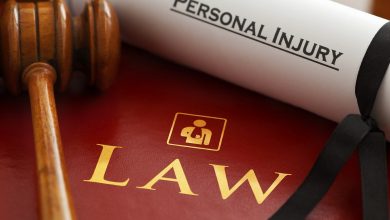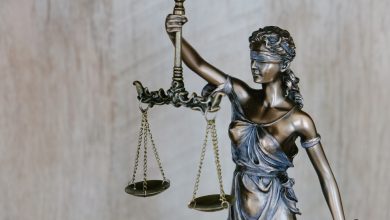Standards of Proof: Preponderance of the Evidence vs. Beyond a Reasonable Doubt vs. Clear and Convincing Evidence

You’ve probably heard of the burden of proof, which determines who is responsible for proving the guilt or innocence of the defendant. In most criminal court proceedings, the prosecution must prove that the defendant is guilty, and in civil cases, the burden of proof is on the plaintiff. The big difference between the two is the amount of proof needed in order to convict the defendant. The standard of proof can be divided into three different standards: preponderance of the evidence, clear and convincing evidence, and beyond a reasonable doubt. Knowing what standard is required in your specific court case can help you make a case to place doubt on that standard’s fulfillment as an effective defense.
Standards of Proof
The standards of proof required to prove a defendant’s guilt will vary based on whether it’s a criminal or civil proceeding. While these are the standards required to made a conviction, there are also other evidentiary standards regarding the introduction of evidence to the court and various other purposes in the courtroom that should also be noted.
Proof Beyond a Reasonable Doubt
This is the most substantial requirement for determining guilt and is the one used in criminal cases. This is likely because criminal cases can come with much more serious penalties than civil cases, including jail time, serious fines, and potentially the loss of certain rights. Innocent until proven guilty is a large part of the criminal justice system and rights afforded to those being accused of a crime, and requiring the prosecution to provide proof beyond a reasonable doubt that the defendant is guilty ensures that the assumption of guilt is not hastily or incorrectly made.
The name of this standard is pretty self explanatory. It requires the jury to be pretty certain that the defendant committed the crime based on the evidence provided in court. What needs to be explained, however, is “reasonable doubt.” This means that, if any rational person would be left with some sort of doubt about whether or not the defendant committed the crime, then the defendant cannot be found guilty. However, the exact definition is intentionally left sort of broadly. This allows the juror to come to their own conclusions about the amount of doubt that they have on the evidence. Essentially, though, it comes down to whether or not the prosecution provided enough evidence that the only reasonable and logical conclusion to come to is that the defendant committed the crime they are being charged with. It doesn’t, however, require that the prosecution must make the jury absolutely certain that the defendant is guilty. There is some shadow of a doubt allowed; it’s up to the jury to then decide how substantial that doubt is and if there’s any other explanation for the facts that point to the defendant’s possible innocence. It’s also important to note that each and every element of the crime must be proven beyond a reasonable doubt as well.
Clear and Convincing Evidence
This standard demands slightly less certainty than the prior standard and is mostly used in civil cases with high stakes involved, especially considering the penalties the defendant is up against. This doesn’t necessarily mean a huge fine looming if they are found guilty, but rather that the defendant may lose some civil liberties in the process. Some of these instances may involve:
- A restraining order
- Loss of parental rights
- A conservatorship
- Determining the validity of a will
While it doesn’t require as much certainty as beyond a reasonable doubt, it still means that the judge must be fairly convinced that the evidence proves the defendant’s guilt. They do not, however, have to be as sure as in a criminal cases; they must just be substantially satisfied with the validity of the evidence and what it proves.
Preponderance of Evidence
This one is a bit easier to define but still remains slightly up for interpretation according to each individual. Used in less consequential civil court cases, preponderance of evidence requires that the plaintiff prove that it’s more than 50 percent likely that the defendant committed the crime. As the lowest standard of proof for conviction, this essentially just means that the judge or jury has to be slightly more convinced than not that the defendant is guilty.

Other Evidentiary Standards
While these standards mainly apply to the conviction part of the court process, there are also other standards that apply to proving certain aspects in court – or even before court in some cases. This will also include standards of evidence from instances where the defendant has the burden of proof for certain facts in a case.
Probable Cause
The most common known one is probable cause. This is what’s required from law enforcement in order to search and seize any of your property or from a judge to serve you a warrant. It also leans on the vague definition of reasonable in the fact that they must provide evidence that logically points to the fact that the defendant may be guilty of a crime. This means that, in order to obtain a warrant against you – either for your arrest or to have your property searched – or to allow a warrantless search, law officials must be able to prove through facts and evidence that it’s rational to believe that you have either either:
- Committed a crime
- The place they want to search is the scene of the crime or has evidence of a crime or
- The property they want to seize is evidence of a crime, stolen, or otherwise illegal
Additionally, to prove a warrantless search or is justified, they must provide clear proof that either:
- The owner or person in control of the property gave permission for it to be searched
- They had reasonable cause to believe the evidence would be destroyed or removed in the time it would take to obtain a warrant
- A lawful arrest had occurred, and they needed to collect evidence before it was destroyed or removed
- They had reasonable cause to believe a crime has occurred or was going to occur or
- They had reasonable cause to believe public safety was in danger
Failure to provide probable cause can result in evidence being thrown out. If it can be proven that there’s no reasonable grounds for a warrantless search, seizure, or arrest, then the victim may be able to press civil charges. However, generally, officer have qualified immunity, which protects them from civil or criminal prosecution in the line of duty.
Defendant’s Required Standards
Additionally, when it comes to cases where the defendant is trying to prove affirmative action, which is when the defense presents evidence that will either lessen or eliminate their liability in the case, they don’t usually have to provide proof beyond a reasonable doubt, but there usually is some pre-established standard. For example, if the defendant is arguing the insanity defense on a federal level, 18 U.S. Code §?17 states that the defendant must only meet the standard of clear and convincing evidence. However, many states may require a preponderance of evidence. Alternatively, a few states may instead require the prosecution to prove the defendant’s sanity beyond a reasonable doubt.
As for mitigating factors, perhaps the defense may argue that, because they acted in the heat of passion, they deserve a lesser sentence than first degree murder. They will then be responsible with proving that it was in fact a crime of passion and not premeditated. As all aspects of a crime are required to make a conviction, the lack of premeditation can be enough to drop a first degree murder charge to at least second degree. In this case, their standard of proof will likely be by preponderance of the evidence.
Another argument made by the defendant may be self-defense, which could lead to all charges being dropped. In most states, this will require a preponderance of evidence, while others may require the prosecution to prove that it wasn’t defense beyond a reasonable doubt if the defendant makes the argument. Other affirmative defenses, such as entrapment and necessity, will usually require a preponderance of the evidence.
Judge’s Factor Standards
The judge will also have certain decisions to make when sentencing. While the defendant must only prove mitigating factors to a preponderance of the evidence, in most cases, the prosecution must prove that certain aggravating factors occurred that would require the defendant to have a more severe conviction or penalty. The judge must be convinced beyond reasonable doubt of every factor in order to use it to elevate the charge. Additionally, in appellate courts, the judge must be convinced beyond reasonable doubt that the previous conviction and sentence were fully justified.

How to Fulfill Evidentiary Standards
Whether it’s the prosecution trying to convince the jury of a guilty conviction or the defendant proving mitigating factors, there are several methods that can be used to make their case.
Eyewitnesses
Obviously, if someone witnessed the crime and can profess to the defendant’s guilt or innocence, their statement will be valuable in court. However, while many jurors are especially convinced by eyewitness accounts, many psychologists argue that these are one of the least reliable methods of providing evidence, as memory is a complicated concept that can be unintentionally altered in many ways. In fact, of the 358 known individuals that have been wrongly convicted of a crime and sentenced to death since 1989, 71 percent of them were sentenced based on eyewitness accounts. As such, this tends to work more in the favor of the prosecutor than the defense.
Expert Testimony
Regarding expert testimony, federal Rule 702 requires a testimony by an expert to be by “a witness who is qualified as an expert by knowledge, skill, experience, training, or education.” This allows the prosecution or defense to use their expert opinion in the matter at hand. However, it also requires that the testimony be based on accurate facts and data and a result of valid procedures, methods, and principles. The expert must then validly apply these results – as well as the process of obtaining the results – to the facts of the case in order to help the jury and judge to comprehend the evidence presented to them or weigh in on the facts surrounding an issue raised. It’s also implied that experts should mostly be providing the facts surrounding an issue, allowing the jury to come to their own, now educated conclusions, rather than telling them exactly what to believe.
Experts should be used in cases where there are matters that may be confusing to the average person, and it may be required that they have further information on a topic in order to make a well informed decision. When deciding on the reliability of an expert witness, it should be considered whether the expert already had knowledge of the specific issue before being approached for their testimony or if they began researching the matter afterwards, as this could possibly lead to some bias in the process. They should also determine:
- If the expert considered all other options
- That their conclusions were well formulated and valid
- Whether they’re being as intentional and cautious in their work here as they would in their regular professional work and
- That their field often provides reliable information regarding the topic being addressed
Physical, Digital, and Documentary Evidence
Documentary and digital evidence are pretty much anything written or media related, such as a will, contract, picture, video, or even email. These types of evidence could be ruled inadmissible in court for a variety of reasons:
- Best evidence: This requires that the evidence produced is an original – unless there’s a genuinely good reason for using a copy.
- Failure to authenticate: If an item is introduced that cannot be verified as authentic, it may be thrown out of evidence.
- Relevance: It must be shown how the presented evidence is relevant to the case at hand in order to avoid anything that may confuse or mislead the jury, as well as prevent a bias to be made.
Physical evidence is generally some item found at the scene of said crime. This can include anything from a weapon to fingerprints, fibers, bullets, or hair. It’s also required that physical evidence be relevant and authenticated.

Your Fifth Amendment Rights and Standards of Proof
The Fifth Amendment guarantees that you will not be “deprived of life, liberty or property without due process of law.” The due process is the important part here, as it’s what requires all accused of a crime to have a fair and just trial that sufficiently demonstrates their guilt justifying the conviction. The case of In re Winship resulted in the Supreme Court stating that the due process protected in this amendment also includes the requirement of the prosecution proving beyond a reasonable doubt every fact required for a conviction of the crime. In reference to your rights when it comes to evidence and proving your innocence, an unofficial list by Judge Henry Friendly holds that you are guaranteed:
- A chance to present some sort of doubt on your guilt
- The right to introduce evidence and call witnesses
- The right to be informed of the prosecution’s evidence
- The right to question the prosecution’s witness
- A record to be provided on the evidence used
- A conviction made only on the basis of the evidence presented in court
If you believe any of these rights have been violated, it may be in your best interest to appeal the decision so that a higher court can evaluate if the standards of proof were there. If they find flaws or that your guilt was not proven beyond a reasonable doubt, it may be grounds for a reversal of your conviction.
The Burden of Proof
The purpose of these standards of proof, according to the Supreme Court, is to “[protect] the accused against conviction except upon proof beyond a reasonable doubt of every fact necessary to constitute the crime with which he is charged.” In protecting your right to due process, it must be ensured that you are receiving a fair trial with a certain level of certainty to your guilt. Although it’s more lenient in civil cases, criminal cases should only result in a guilty conviction when the jury is completely convinced of your guilt. If you’re facing a trial where you don’t think the prosecution can sufficiently prove all aspects required of the crime beyond reasonable doubt, an excellent defense is to raise issues with their case, presenting enough doubt in the mind of the jury or judge that they are unable to confidently make that guilty conviction. Although still flawed, the system regarding burden and standard of proof is intended to protect the innocent while carrying out justice.



